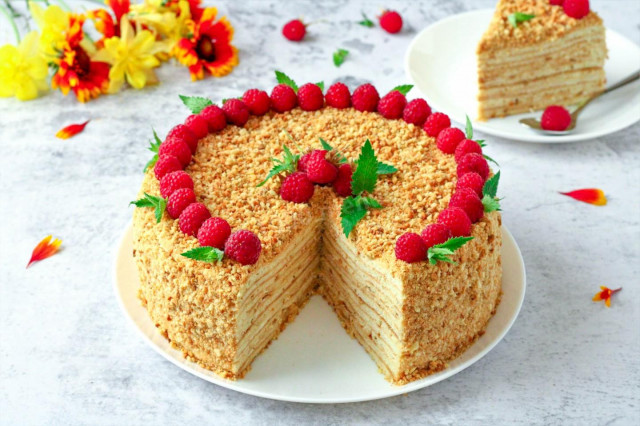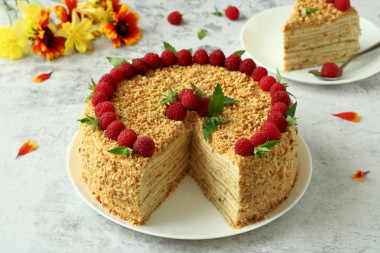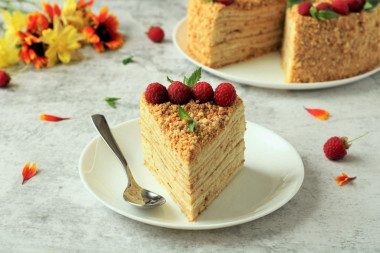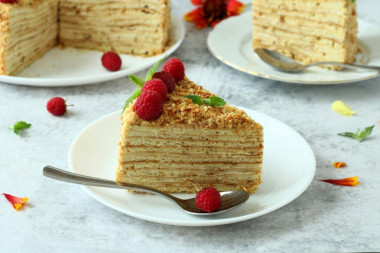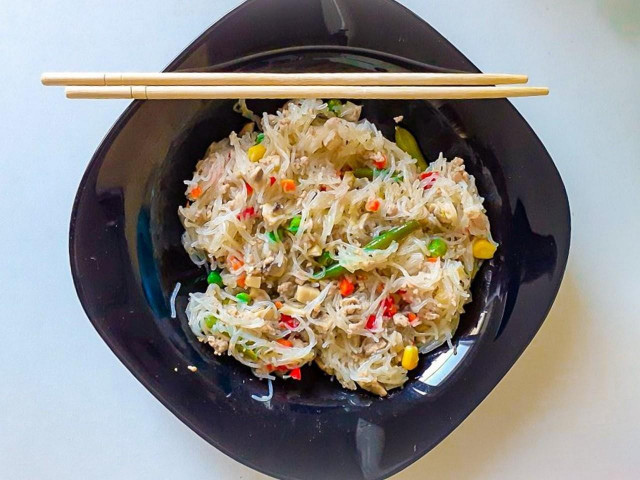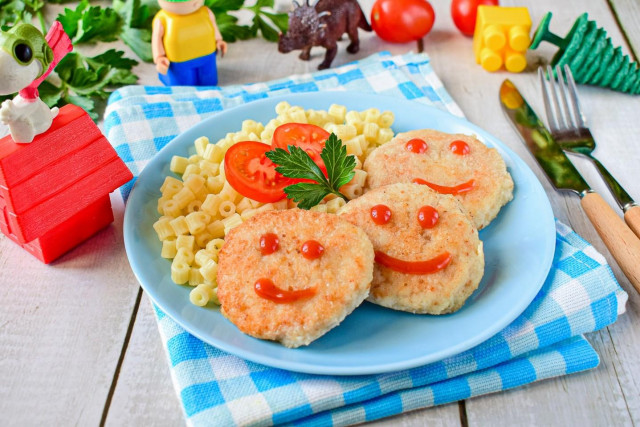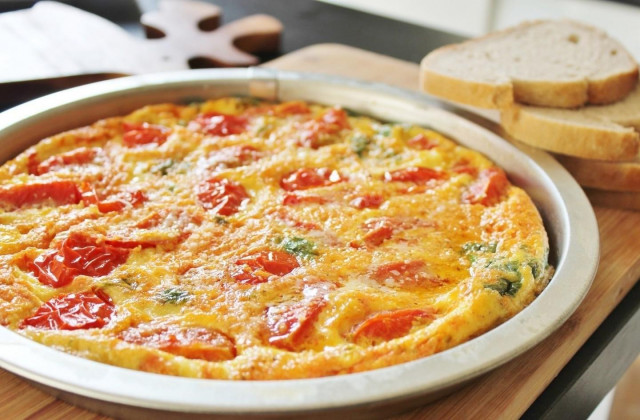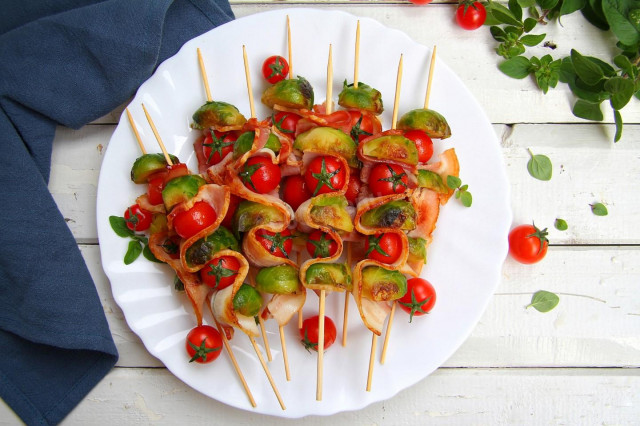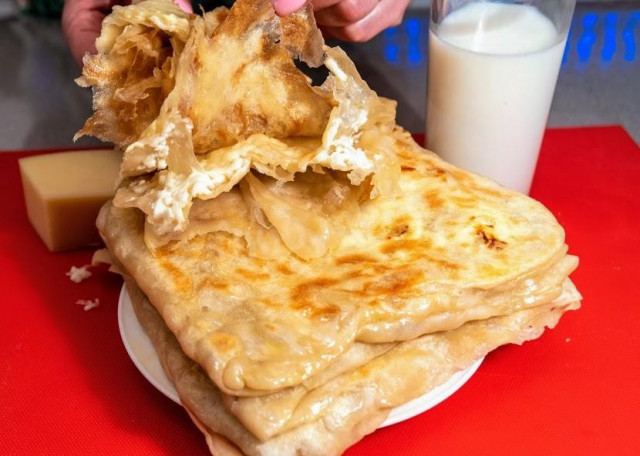Composition / ingredients
Step-by-step cooking
Step 1:
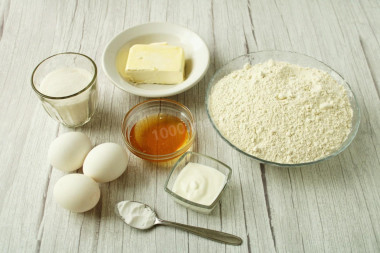
How to bake a honey cake in a frying pan? Prepare the necessary ingredients for making honey cake cakes in a frying pan. Sour cream is suitable for any fat content. Use flour of the highest grade.
Step 2:
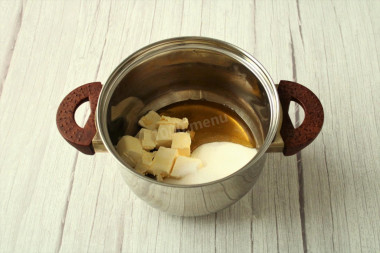
Combine butter, honey and sugar in a small saucepan. It is necessary to combine them into a homogeneous mass. It is best to do this in a water bath.
Step 3:
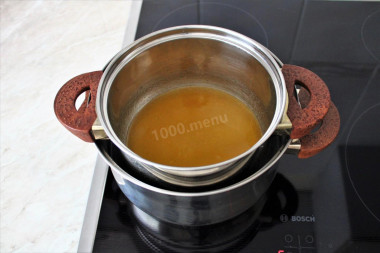
How to properly melt these ingredients in a water bath? You will need two containers of different diameters. Pour water into a large one and put it on the stove. Place the smaller pan on top so that its bottom does not touch the water. Under the influence of boiling water, the mass will begin to melt. Stir the contents of the pan slightly to speed up the process. As soon as the mass becomes completely homogeneous, remove the pan from the stove.
Step 4:
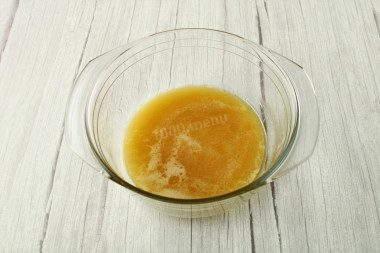
Pour the resulting sweet oil mixture into a container for kneading dough. Add the soda and mix. Let it cool down a little.
Step 5:
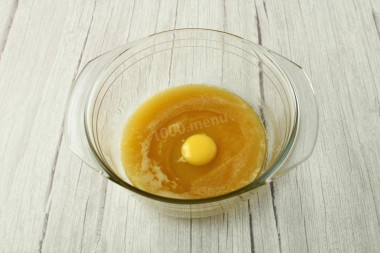
In a slightly warm mass, beat one egg at a time, stirring well with a whisk after each.
Step 6:
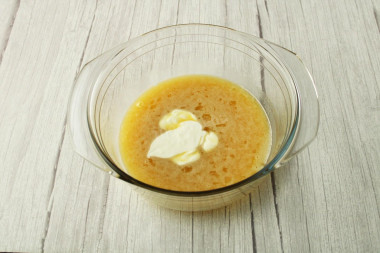
Add sour cream, mix.
Step 7:
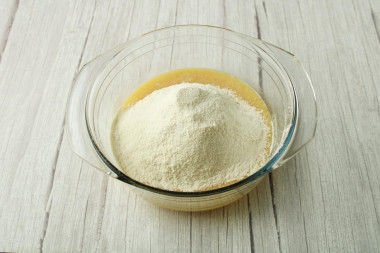
Sift the flour in advance or immediately pour it into the dough through a sieve. This is necessary to saturate it with oxygen. Then the cakes will turn out soft and will rise well when baking.
Step 8:
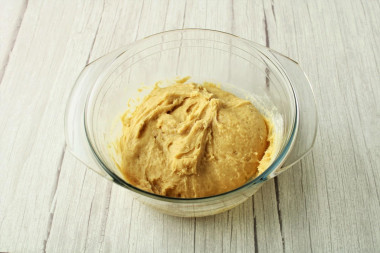
Knead the dough until smooth. It should be very soft, sticky, so it's better to stir it with a spoon. From such a dough, the cakes will turn out to be quite tender. Do not add more flour, otherwise the dough will turn out tight, and the baked cakes will be hard. Cover the dough with a film and put it in the refrigerator for an hour.
Step 9:
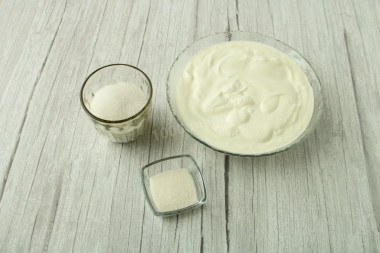
Prepare the cream. Take sour cream of any fat content. But the higher the fat content, the thicker the cream will be. Add sugar to taste. Vanilla sugar can be replaced with vanilla.
Step 10:
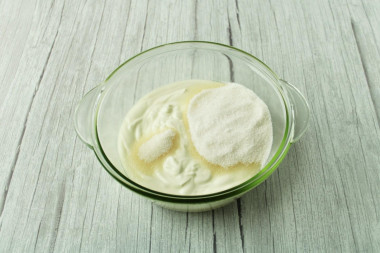
Combine sour cream, sugar and vanilla sugar in a convenient container. Mix everything well. Put the cream in the refrigerator.
Step 11:
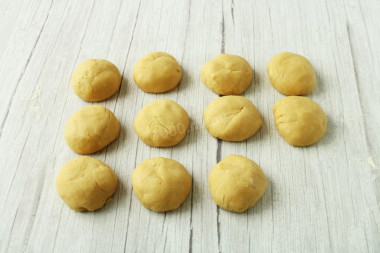
As a result of cooling, the dough will thicken slightly. Put the dough on the table, well sprinkled with flour, roll the sausage. Divide it into equal parts. The number of parts will depend on the diameter of the pan on which you will bake cakes. I have a frying pan with a diameter of 20 cm, I divided the dough into 11 parts. If the diameter of the frying pan is larger, respectively, the cakes will turn out less.
Step 12:
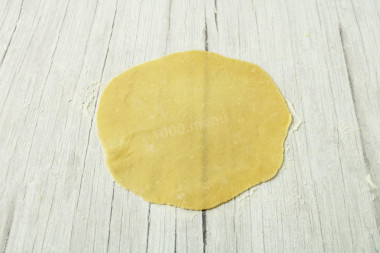
Roll out each part of the dough into a thin cake of the required size. At the same time, be sure to pour a sufficient amount of flour on the table, otherwise the dough will stick strongly to the table.
Step 13:
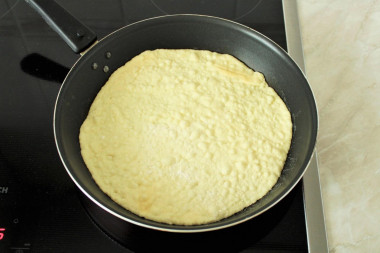
Preheat a dry frying pan, carefully transfer the rolled cake to the pan with a rolling pin. In this case, the cake may be slightly deformed, fix it immediately in the pan with your hands. Fry the cake over medium heat until browned. At the same time, bubbles will appear on the surface of the dough. The color of the cake should become uniformly matte, that is, there should be no unpeeled areas.
Step 14:
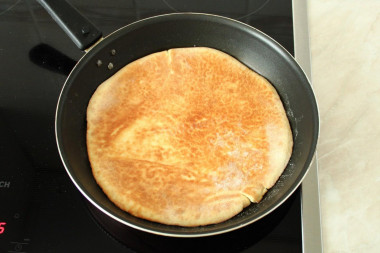
Turn the cake to the other side and fry for about 1 more minute.
Step 15:
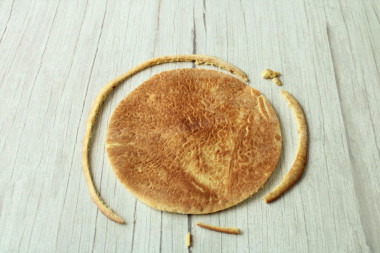
Level the finished cake on a plate of the desired diameter. Collect the trimmings separately, they will be needed later. Similarly, prepare cakes from all the honey dough.
Step 16:
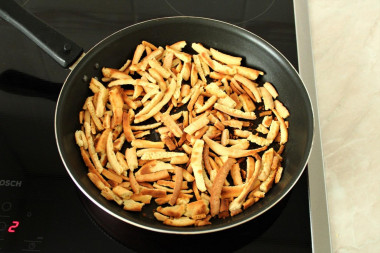
Trim the cakes a little more dry so that they can be crushed into crumbs.
Step 17:
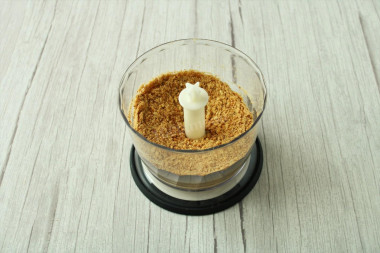
You can do this with a blender or a rolling pin. Choose the degree of grinding as desired.
Step 18:
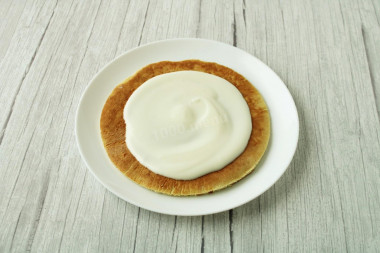
Assemble the cake on a flat plate, generously smearing each cake with cream.
Step 19:
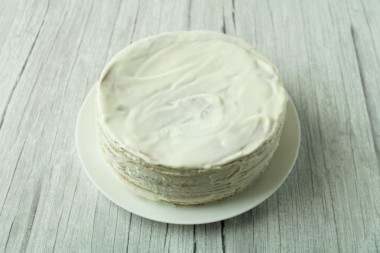
Top and sides also cover the cake with a layer of cream.
Step 20:
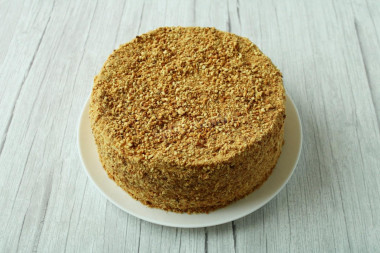
Sprinkle the whole cake with crushed crumbs. Put the dessert in the refrigerator for 5-6 hours to soak well. It is better to leave the cake overnight so that it becomes more tender and soaked.
Step 21:
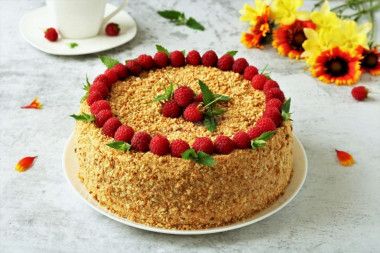
If desired, you can decorate the cake before serving.
Step 22:
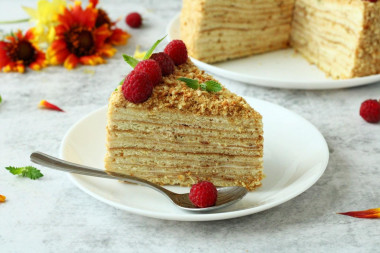
Have a nice tea party!
Be prepared for the fact that flour may need more or less than indicated in the recipe. Focus not on the amount of flour, but on the desired consistency of the dough. To avoid mistakes, read about flour and its properties!
Be sure to wash the eggs before use, as even the seemingly clean shell may contain harmful bacteria. It is best to use food detergents and a brush.
Caloric content of the products possible in the composition of the dish
- Sour cream with 30 % fat content - 340 kcal/100g
- Sour cream with 25% fat content - 284 kcal/100g
- Sour cream with 20% fat content - 210 kcal/100g
- Sour cream of 10% fat content - 115 kcal/100g
- Sour cream - 210 kcal/100g
- Chicken egg - 157 kcal/100g
- Egg white - 45 kcal/100g
- Egg powder - 542 kcal/100g
- Egg yolk - 352 kcal/100g
- Ostrich egg - 118 kcal/100g
- Honey - 400 kcal/100g
- Granulated sugar - 398 kcal/100g
- Sugar - 398 kcal/100g
- Butter 82% - 734 kcal/100g
- Amateur unsalted butter - 709 kcal/100g
- Unsalted peasant butter - 661 kcal/100g
- Peasant salted butter - 652 kcal/100g
- Melted butter - 869 kcal/100g
- Wheat flour - 325 kcal/100g
- Baking soda - 0 kcal/100g
- Vanilla sugar - 379 kcal/100g

